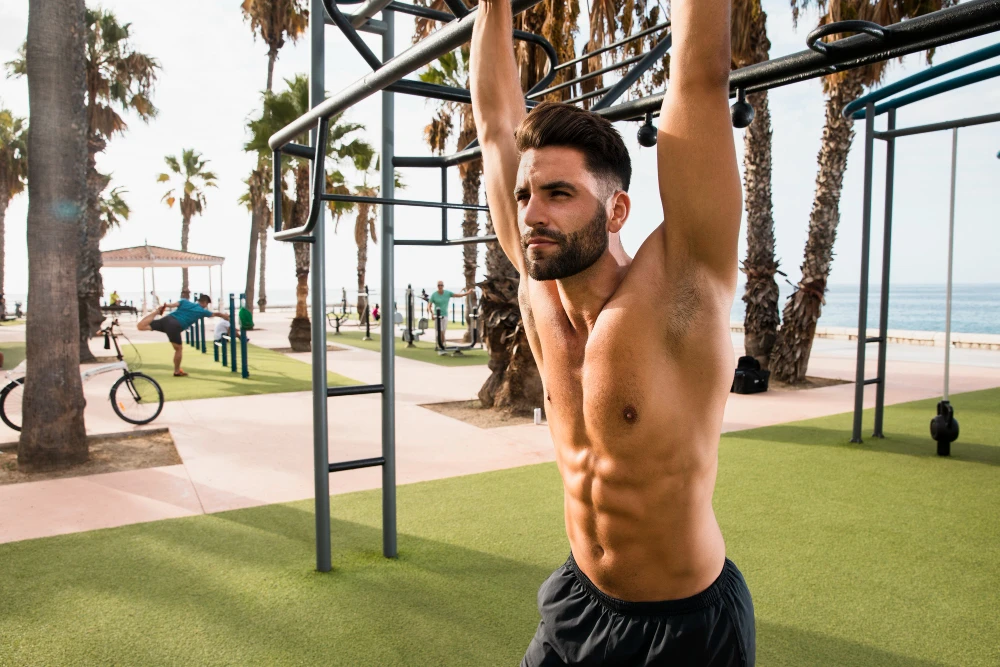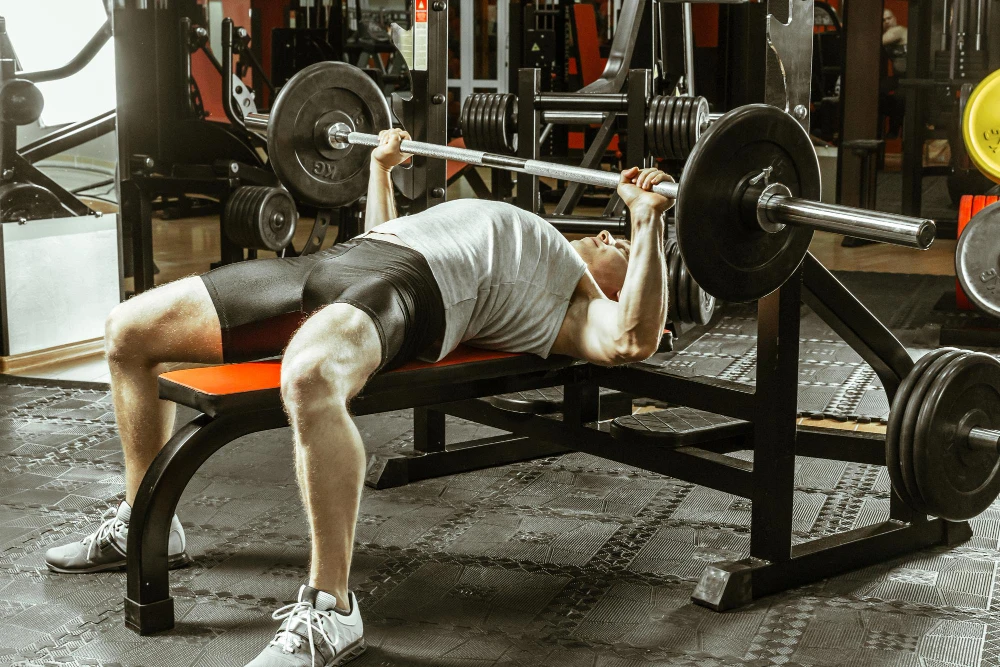Looking to build muscle and sculpt your physique? Look no further than the ultimate pull day workout. Pull exercises are essential for targeting the muscles in your back, biceps, and posterior chain, helping you achieve a balanced and well-rounded physique. In this comprehensive guide, we’ll take you through an intense pull day workout that will push your limits and maximize your gains.
From classic exercises like pull-ups and rows to lesser-known movements like face pulls and lat pulldowns, we’ve got you covered. Not only will this workout help you develop a strong and powerful back, but it will also improve your posture, enhance your grip strength, and boost your overall athleticism.
Whether you’re a beginner looking to kickstart your fitness journey or an experienced lifter looking for a new challenge, this pull day workout is designed to take your gains to the next level. Get ready to pull your way to a stronger, more muscular physique.
Key muscle groups targeted in a pull day workout
A pull day workout primarily targets the muscles in your back, biceps, and posterior chain. Here are the key muscle groups that you’ll be working during a pull day session:
Lats (Latissimus Dorsi): The lats are the largest muscles in your back and are responsible for creating a wide and V-shaped appearance. Exercises like pull-ups and lat pulldowns specifically target the lats.
Rhomboids: The rhomboids are located between the shoulder blades and are responsible for retracting the scapulae. Exercises like rows and face pulls work the rhomboids, helping to improve posture and upper back strength.
Trapezius (Traps): The traps are large muscle groups that span the upper back and neck. They play a major role in shoulder stability and posture. Exercises like shrugs and upright rows target the traps.
Biceps: The biceps are located in the front of the upper arm and are responsible for elbow flexion. Pull day exercises like bicep curls and chin-ups specifically target the biceps.
Posterior Chain: The posterior chain includes the muscles in the back of your body, such as the erector spinae, glutes, and hamstrings. Exercises like deadlifts and bent-over rows work the posterior chain, helping to develop strength and stability.
Pull day workout routine for beginners
If you’re new to pull day workouts, it’s important to start with a routine that focuses on building a solid foundation of strength and technique. Here’s a sample pull day workout routine for beginners:
Lat Pulldowns (3 sets x 12 reps): Lat pulldowns are a great exercise for beginners as they allow you to adjust the weight and focus on proper form. Sit at the lat pulldown machine and grasp the bar with a wide grip. Pull the bar down towards your chest while keeping your back straight and shoulders down. Slowly return to the starting position and repeat.
Dumbbell Rows (3 sets x 10 reps per arm): Dumbbell rows are a unilateral exercise that helps improve balance and stability. Place one knee and hand on a bench, with your back parallel to the ground. Hold a dumbbell in your free hand and pull it towards your hip, squeezing your shoulder blades together. Lower the dumbbell back down and repeat on the other side.
Seated Cable Rows (3 sets x 12 reps): Seated cable rows target the muscles in your upper back and are great for building overall back strength. Sit at the cable row machine with your feet against the footrests. Grasp the handles with an overhand grip and pull them towards your chest while keeping your back straight. Slowly return to the starting position and repeat.
Bicep Curls (3 sets x 12 reps): Bicep curls are a classic exercise for building arm strength. Stand with a dumbbell in each hand, palms facing forward. Keeping your elbows close to your sides, curl the weights up towards your shoulders, squeezing your biceps at the top. Slowly lower the weights back down and repeat.
Face Pulls (3 sets x 12 reps): Face pulls target the rear delts and upper back, helping to improve posture. Attach a rope to a cable machine at face height. Grasp the rope with an overhand grip and step back to create tension. Pull the rope towards your face, keeping your elbows high and squeezing your shoulder blades together. Slowly return to the starting position and repeat.
Remember to warm up before starting your workout and always consult with a fitness professional if you’re unsure about proper form or technique.

Advanced pull day exercises for experienced lifters
If you’re an experienced lifter looking to take your pull day workouts to the next level, here are some advanced exercises to incorporate into your routine:
Pull-ups (3 sets x 8 reps): Pull-ups are a challenging exercise that target the entire back and biceps. Hang from a pull-up bar with your palms facing away from you and your hands slightly wider than shoulder-width apart. Pull your body up towards the bar, squeezing your shoulder blades together. Lower yourself back down with control and repeat.
T-Bar Rows (3 sets x 10 reps): T-Bar rows are a compound exercise that target the upper back, lats, and traps. Place one end of a barbell in a landmine attachment or secure it in a corner. Straddle the barbell with your feet shoulder-width apart and hinge forward from the hips. Grasp the handle with an overhand grip and row the weight towards your chest, squeezing your shoulder blades together. Lower the weight back down and repeat.
Weighted Chin-ups (3 sets x 8 reps): Weighted chin-ups are a variation of the pull-up that adds extra resistance to the movement. Attach a weight plate or dumbbell to a dip belt or hold it between your feet. Perform chin-ups as described earlier, focusing on maintaining proper form and control.
Barbell Rows (3 sets x 10 reps): Barbell rows are a compound exercise that targets the entire back, traps, and biceps. Stand with your feet shoulder-width apart and grasp a barbell with an overhand grip. Hinge forward from the hips, keeping your back flat and core engaged. Row the barbell towards your lower chest, squeezing your shoulder blades together. Lower the weight back down and repeat.
Hammer Curls (3 sets x 12 reps per arm): Hammer curls are a variation of bicep curls that target the brachialis and forearms. Stand with a dumbbell in each hand, palms facing your body. Curl the weights up towards your shoulders, keeping your palms facing inwards throughout the movement. Slowly lower the weights back down and repeat.
Always ensure you have proper form and technique before attempting advanced exercises, and consider working with a qualified trainer or coach to maximize your results.
Pull day workout accessories and equipment
To get the most out of your pull day workouts, it’s important to have the right accessories and equipment. Here are some key items to consider:
Pull-up bar: A sturdy pull-up bar is essential for performing exercises like pull-ups and hanging leg raises. Look for a bar that can be mounted securely to a wall or doorway.
Resistance bands: Resistance bands can be used to add extra resistance to exercises like lat pulldowns and rows. They’re also great for warm-up exercises and mobility work.
Weightlifting belt: A weightlifting belt can provide extra support and stability during heavy lifts like deadlifts and rows. Look for a belt that fits snugly and provides adequate support for your lower back.
Dip belt: A dip belt allows you to add extra weight to exercises like weighted chin-ups and dips. Look for a belt that can securely hold weight plates and has adjustable straps.
Grip trainers: Grip trainers can help improve grip strength and forearm development. They come in various forms, from hand grippers to grip balls and grip trainers.
Remember to prioritize safety and invest in quality equipment that suits your needs and preferences.
Tips for maximizing your pull day workout
To make the most of your pull day workouts and achieve optimal results, consider the following tips:
Focus on form: Proper form is key to maximizing the effectiveness of each exercise and reducing the risk of injury. Take the time to learn and practice proper form for each exercise before increasing the weight or intensity.
Vary your grip: Experiment with different grip widths and styles to target different muscles within the back and biceps. For example, wide-grip exercises like pull-ups target the lats, while close-grip exercises like chin-ups focus more on the biceps.
Progressively overload: To build muscle and strength, it’s important to gradually increase the weight or intensity of your exercises over time. Track your progress and aim to improve each workout, whether it’s by adding more weight or performing additional reps.
Include unilateral exercises: Unilateral exercises, such as single-arm rows, can help improve muscle imbalances and overall stability. Incorporate these exercises into your routine to ensure balanced development.
Rest and recover: Allow your body enough time to rest and recover between pull day workouts. Aim for at least 48 hours of rest before training the same muscle groups again.

Common mistakes to avoid during a pull day workout
To ensure you get the most out of your pull day workout and minimize the risk of injury, avoid these common mistakes:
Using momentum: Avoid using momentum to perform exercises, as this takes the focus away from the targeted muscles and reduces the effectiveness of the exercise. Instead, focus on controlled and deliberate movements, emphasizing the mind-muscle connection.
Neglecting proper warm-up: A proper warm-up is essential to prepare your muscles, joints, and nervous system for the workout ahead. Spend at least 5-10 minutes performing dynamic stretches, mobility exercises, and light cardio to increase blood flow and warm up your body.
Neglecting proper rest and recovery: Pushing yourself too hard without allowing adequate rest and recovery can lead to overtraining and increased risk of injury. Listen to your body and take rest days when needed. Incorporate stretching, foam rolling, and other recovery techniques into your routine to promote muscle repair and reduce soreness.
Sacrificing form for weight: Prioritize proper form over lifting heavy weights. Using excessive weight with poor form not only increases the risk of injury but also reduces the effectiveness of the exercise. Focus on maintaining proper alignment, engaging the correct muscles, and using a weight that allows you to perform the exercise with control and good technique.
Neglecting mobility work: Mobility work is crucial for improving range of motion, reducing the risk of injury, and optimizing performance. Incorporate exercises like shoulder dislocations, thoracic rotations, and hip stretches into your warm-up and cool down routine to improve mobility and flexibility.
By avoiding these common mistakes, you can ensure that your pull day workouts are safe, effective, and aligned with your fitness goals.
Let’s Sum Up
Incorporating a well-structured pull day workout into your fitness routine is a great way to build a strong and powerful back, develop balanced muscle development, and improve overall athleticism. Whether you’re a beginner or an experienced lifter, the exercises and tips outlined in this guide will help you maximize your gains and take your physique to the next level. Remember to prioritize proper form, progressively overload, and listen to your body. With consistency, dedication, and the right mindset, you can pull your way to a stronger, more muscular physique.
Happy lifting!



